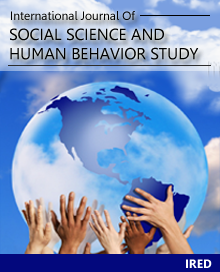Evolution of Spatial Structure of World Heritage City of Kandy, Sri Lanka: An Analysis of Population Density Change
Author(s) : L MANAWADU, RJM UDUPORUWA
 Abstract
Abstract
Urban population density is one of prime determinants and a measure of spatial structure of a city. Theoretically and empirically shown general trend of growth of cities over time is that they are becoming more ‘flat’ decentralizing its residential population and have a tendency for suburbanization. This paper examines the evolution of spatial structure of world heritage city of Kandy, Sri Lanka focusing its growth phases, spatio-temporal change of population density distribution and testing the general hypothesis of world city expansion for its future planning considerations. A series of concentric zonal density maps were produced by using population density statistics with the help of ARCGIS 10.2 version to visualize population density shifting process over the time. Negative exponential growth model was employed to quantify the density gradients over the time. Results reveal that high density concentric zones are closer to the city center until 1991 and gradually shifting to the periphery starting in 2001 and further in 2011. Density gradient was peak in 1957(-0.24) and has progressively reduced up to -0.06 in 2001 and further 0.3 in 2011. After 2001 the city is being experiencing the stationary phase and it exhibits the ‘maturity’ of urban growth. Density analysis clearly confirms the two hypotheses of world city expansion exhibiting the density declining with increasing distance from the city centre and its flattening nature through time. This spatiotemporal change of residential population of the Kandy city is a sign of decentralization of population which lead the suburbanization trend of the city.
 Full Paper PDF
Full Paper PDF
